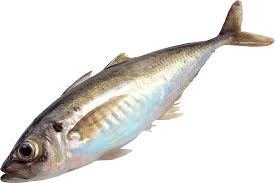Health Benefits of Clover Sprouts
- You might consider sprouts as just a simple topping for your salad or sandwich. But as a germinated seed, sprouts are a concentrated source of nutrients designed to support the growth of the new plant, and including them in your diet can help you meet essential nutrient needs. Clover sprouts, with a look and taste similar to alfalfa sprouts, provide protein, fiber, calcium, iron, vitamin C and folate. Adding them to your salad or sandwich offers a number of health benefits.
Low in Calories
Clover sprouts add flavor and crunch to your food without overloading you on calories. A 100-gram serving of raw clover sprouts contains 23 calories. By comparison, one slice of bacon, also used to add flavor and crunch to salads and sandwiches, contains 45 calories per slice. Including more low-calorie foods in your diet, such as clover sprouts, can make it easier for you to balance your calories to maintain a healthy weight.
Source of Protein
Clover sprouts can also help you meet your protein needs. In fact, most of the calories in clover sprouts, 70 percent, come from its protein content. A 100 g serving of clover sprouts contains 4 g of protein, meeting 8 percent of your daily value. Clover sprouts do not supply all of the essential amino acids, so they are not a complete source of protein. But if you eat a varied diet that includes other vegetables and grains, you should be able to meet all of your essential amino acid needs.
Source of Fiber
Clover sprouts can also help you meet your fiber needs. A 100 g serving contains 2 g of fiber, meeting 8 percent of your daily value. The fiber in clover sprouts can also aid in weight control by slowing digestion, helping you feel full longer. In addition, including more fiber-rich foods in your diet lowers your risk of both heart disease and type 2 diabetes.
Rich in Vitamins
As previously mentioned, sprouts are a concentrated source of essential nutrients, including vitamins, used to help support growth of the plant. Clover sprouts provide vitamin C, vitamin A, B vitamins and vitamin K. A 100 g serving of clover sprouts provides 14 percent of your daily value for vitamin C and 38 percent of your daily value for vitamin K. Vitamin C is an important antioxidant that protects your cells against oxidative damage and might lower your risk of heart disease and diabetes. Vitamin K is needed for blood clotting.
Rich in Minerals
Although clover sprouts are not a significant source of any one mineral, they do provide a small amount of several essential ones, including calcium, iron, phosphorus, zinc, selenium and magnesium. One serving of the sprouts meets 5 percent of your daily value for iron. As many as 80 percent of the world's population might be iron deficient, according to the Office of Dietary Supplements. Iron is essential for the production of the proteins that carry oxygen in your body.
Keywords: Health Benefits of Clover Sprouts




































